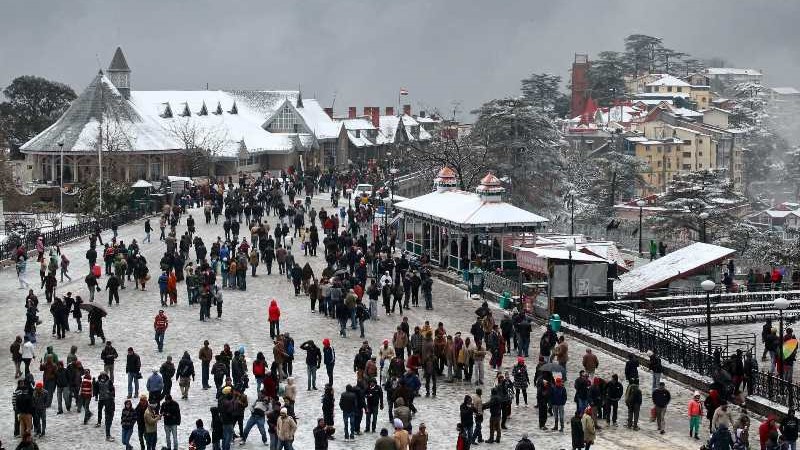Shimla: History and Culture of the Queen of Hills
Nestled in the majestic Himalayan ranges, Shimla, often referred to as the ‘Queen of Hills’, is not just a picturesque tourist destination. The city boasts a rich historical and cultural tapestry that sets it apart. This article delves into the fascinating history and vibrant culture of this iconic hill station.
A Colonial Summer Haven
In the early 19th century, Shimla, then known as ‘Shyamala’, was a little more than a forested slope. It was the British colonialists who recognized its potential as a summer escape from the oppressive heat of the plains. By 1864, Shimla had become the summer capital of British India, serving as the government’s official retreat. The town soon grew in prominence with the construction of buildings in the Tudorbethan and neo-Gothic architectures, which still dot the landscape.
Link: [Colonial-era Buildings of Shimla]
The Kalka-Shimla Railway: An Engineering Marvel
A significant chapter in Shimla’s history is the construction of the Kalka-Shimla Railway in 1903. Recognized as a UNESCO World Heritage site, this narrow-gauge railway, with its 102 tunnels and 864 bridges, stands testament to the engineering skills of that era. The railway offers mesmerizing views of the hills and valleys and is an intrinsic part of Shimla’s identity.
Link: [Journey through Kalka-Shimla Railway]
Languages and Dialects: A Melting Pot
While Hindi is the lingua franca of Shimla, the city’s multilingual nature is a reflection of its diverse culture. Pahari, the local dialect, is spoken widely. Shimla’s cultural mosaic is further enriched by Punjabi, Tibetan, and English speakers.
Festivals: A Blend of Tradition and Modernity
Shimla’s culture shines brightly through its festivals. Traditional festivals like Lohri, Baisakhi, and Diwali are celebrated with great fervor. However, what sets Shimla apart are its unique events like the Shimla Summer Festival, which showcases folk performances, crafts, and local delicacies. The Ice Skating Carnival, held during winters, is another highlight, drawing participants and spectators from across the country.
Link: [Shimla’s Festive Calendar]
Culinary Delights: From Himachali to Global
Shimla’s culinary scene is as diverse as its culture. Traditional Himachali cuisine, with dishes like Chana Madra and Dham, finds its place alongside global favorites in the city’s myriad eateries. The influence of Tibetan culture is particularly evident in the local food scene with delicacies like momos and thukpa being widely popular.
Link: [Gastronomic Journey through Shimla]
Arts and Handicrafts: Echoes of the Past
The city’s bustling bazaars are a treasure trove of traditional arts and handicrafts. From intricately designed Himachali shawls to wooden crafts and silver jewelry, Shimla offers a piece of its soul to every visitor. These artifacts not only serve as souvenirs but are also a testament to the city’s rich cultural heritage.
Shimla is not just a travel destination; it’s an experience. Its history and culture are as mesmerizing as its natural beauty. Whether you’re walking down the bustling Mall Road or exploring a quiet colonial-era alley, Shimla has stories etched in every corner, waiting to be discovered.

